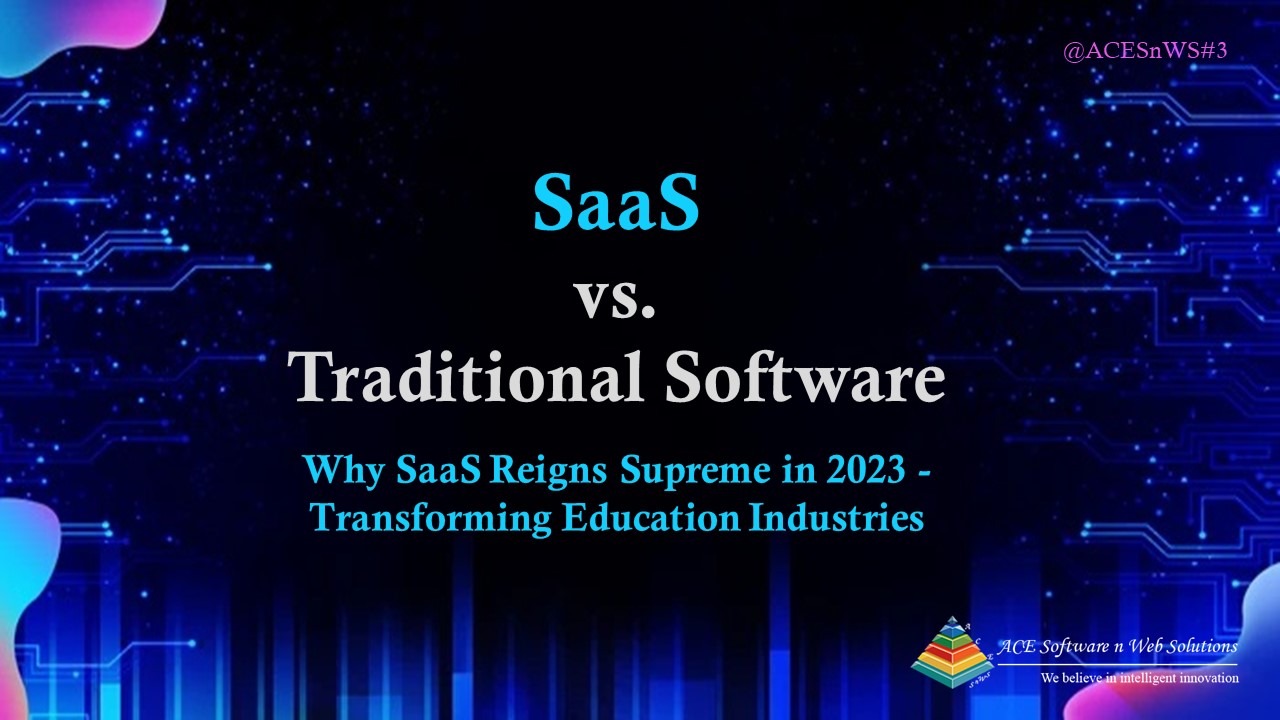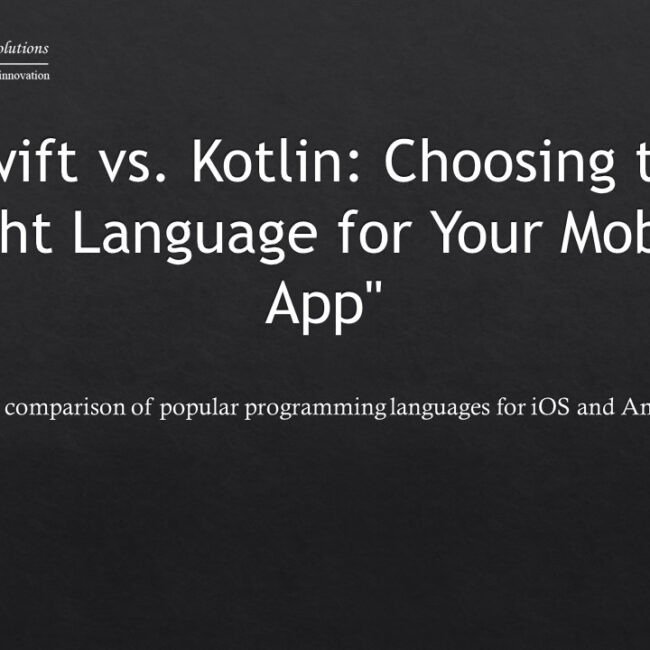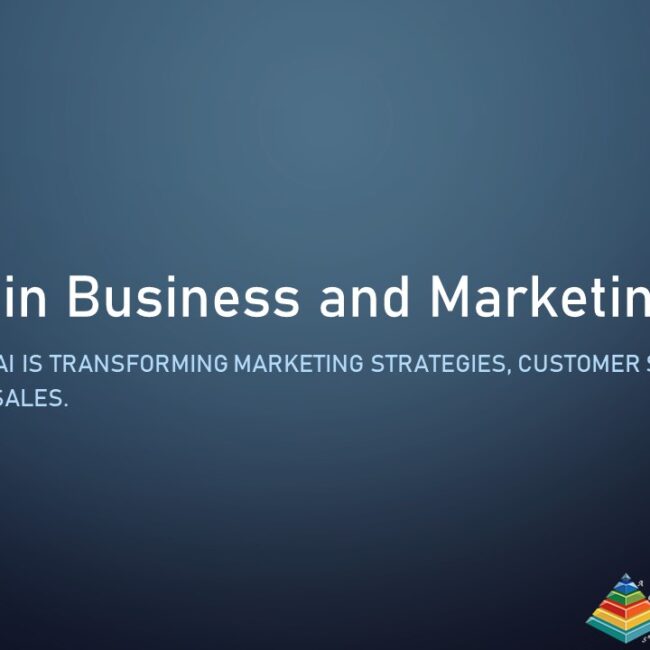
SaaS vs. Traditional Software: Why SaaS Reigns Supreme in 2023 – Transforming Education Industries
In the dynamic landscape of the education industry (EdTech), technology plays a pivotal role in shaping the future of learning. The choice between Software as a Service (SaaS) and traditional software solutions can significantly impact the efficiency, scalability, and success of educational institutions. In 2023, the debate between SaaS and traditional software in education has never been more crucial and it’s clear that SaaS is taking the lead. Today’s blog aims to provide a comprehensive analysis of why SaaS emerges as the unparalleled choice for transforming the education industry and why institutions are increasingly opting for this modern approach.
Before delving into the SaaS vs. Traditional Software debate, let’s understand the unique needs of the education industry:
- Scalability: Educational institutions often experience fluctuating user numbers, requiring flexible and scalable solutions
- Collaboration: Seamless collaboration among students, teachers, and administrators is essential for effective learning management
- Accessibility: Remote learning and mobile access have become integral, demanding solutions that are accessible from any device
- Cost-Efficiency: Educational institutions, often working with limited budgets, seek cost-effective solutions without compromising quality
The Educational Landscape: Technology Upgradations for Educational Transformation
- Adaptability in a Dynamic Environment – In the fast-paced world of education, where adaptability is key, SaaS solutions offer unparalleled flexibility. Unlike traditional software which often requires significant time and resources for upgrades, SaaS allows seamless integration of new features and functionalities. This adaptability ensures that our educational platforms stay relevant and responsive to the changing needs of students, educators, and administrators
- Scalability for Sustainable Growth – For educational institutions, scalability is always on the radar. SaaS provides the scalability needed for the organic growth of institutions. The ability to scale up or down based on demand, without the burden of heavy upfront costs ensures that the technology infrastructure aligns with the pace of the business growth
- Change Management Strategies – Implementing new technology requires strategic change management. SaaS, with its subscription-based model and user-friendly interfaces, facilitates a smoother transition for students, teachers, and administrators. The phased approach to adoption allows to manage change effectively, minimizing disruptions to the ongoing operations
- User-Centric Design for Enhanced Adoption – User experience is paramount in the education industry. SaaS solutions, designed with a user-centric approach enhance engagement and adoption rates among all. This focus on user experience aligns with the commitment to providing an enriching and accessible learning environment
- Real-Time Collaboration for Enhanced Learning – SaaS platforms in education empower real-time collaboration among all. Features like collaborative document editing and instant communication foster a dynamic and interactive learning experience. Traditional software often falls short in providing such advanced collaboration tools
- Data Security and Compliance Standards – In an era where data breaches are a constant threat, the robust security measures integrated into SaaS solutions stand out. Safeguarding sensitive educational data is a core responsibility, the centralized security features and adherence to compliance standards inherent in SaaS platforms provide peace of mind
- Customization and Integration – SaaS platforms in education often offer customization options, allowing institutions to adapt the software to their unique needs. Seamless integration with other tools and applications enhances the overall education ecosystem, creating a more efficient learning environment
Navigating the Transition: Psychological Effects in Decision-Making
- From a business psychology standpoint, financial considerations are of paramount importance when making decisions. Cost-efficiency and budget optimization have always been key parameters in decision-making
- The subscription-based pricing models of SaaS not only eliminate significant upfront costs but also allow for more effective budget management. This aligns with the strategic goal of optimizing resources for maximum impact
- Investing in comprehensive training programs to empower employees with the skills needed to navigate SaaS solutions effectively. Also, establishing continuous feedback loops to address any adoption challenges promptly helps to make quick decisions
- Furthermore, decision-makers are guided by a long-term vision for their institution. By utilizing SaaS, with its automatic updates and continuous innovation, the technology infrastructure will remain at the forefront of educational advancements. This strategic planning approach positions institutions as industry leaders, ready to adapt to future changes
Embracing SaaS for Educational Excellence
The choice between SaaS and traditional software is not just a technological decision, it’s a strategic move that impacts the very core of the educational institutions. As we navigate the educational landscape the evidence overwhelmingly supports the adoption of SaaS solutions in the education industry. In 2023, the supremacy of SaaS in transforming education aligns seamlessly with the vision for educational excellence and innovation. Embracing SaaS is not merely an upgrade, it’s a strategic move that aligns with the evolving needs of modern education. It’s about fostering an environment where technology serves as an enabler, not a constraint. Institutions that embrace SaaS are not only future-proofing their technology infrastructure but are also ensuring a more engaging, efficient, and accessible educational experience for students, teachers, and administrators alike.


